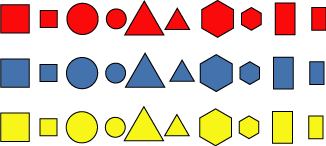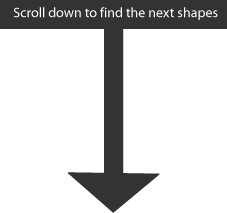Copyright © University of Cambridge. All rights reserved.
'Logic Block Collections' printed from https://nrich.maths.org/
Show menu
Why do this problem?
This problem gives children a set of objects to sort with very distinct criteria which means that they will have opportunities to develop appropriate mathematical language. This is also a chance for children to make hypotheses and then alter them once more information is available.
Possible approach
If possible, children should have a set of Logic Blocks to handle and sort before starting this activity. Encourage them to describe features of the blocks, for example, you could ask one child to describe a shape for the others to guess.
Begin by revealing only the starting shapes and ask pairs of children to come up with suggestions for which other shapes could go with them. Invite pairs to share their ideas with the whole group - you could make a note of each idea. The important thing is to encourage learners to give clear reasons for the groupings they have made - it is only when more information is given that we can be
more certain of the correct set.
The problem does not differentiate between the different thicknesses in the Logic Blocks so that one set can be shared between two groups of children. If real Logic Blocks are not available, this coloured sheet can be printed out and cut out. If a photocopiable sheet is more suitable this can be coloured by the children before being cut up.
As a plenary, you could ask a pair to come up to choose two shapes which fit a criterion. Other members of the group could come up and add another shape into the set and the pair move it if it doesn't fit with their criterion. You could carry on in this way until the set has been correctly described.
Key questions
What is the same about these two blocks?
What others could go with them?
Is there anything else that is the same about these two blocks?
Which others would go with them this time?
Possible extension
Learners could be challenged to draw their own shape/s which fit the set.
Possible support
Some children might benefit from some simpler sorting activities to being with, for example finding all the squares, then all the large shapes of one colour etc.





